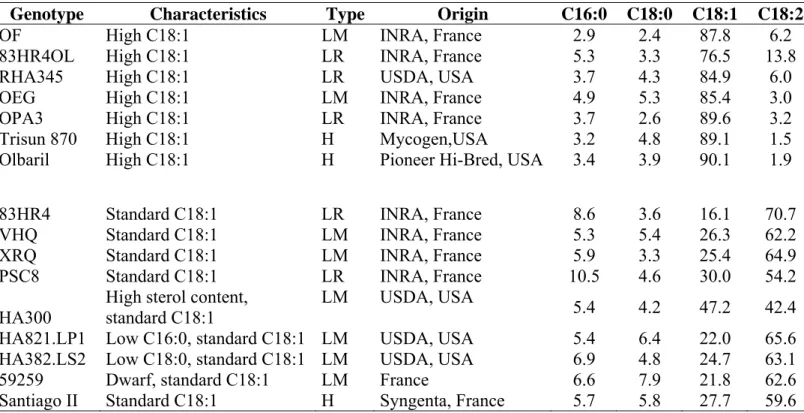Sterol content in sunflower seeds (Helianthus annuus L.) as affected by genotypes and environmental conditions
Texte intégral
Figure




Documents relatifs
The isolate-specific and -nonspecific partial resistance genotypes identified in these experiments should be used in crossing programmes for breeding of durable resistance to
Iden- tification of quantitative trait loci for relative water content and chlorophyll concentration traits in recombinant inbred lines of sunflower ([i]Helianthus annuus[/i] L.)
suffit pas que le chercheur, unilatéralement, soit disposé par volonté personnelle d’être "à l’écoute" de l’autre ; comme si, par incantation,
Another seven essential amino acids did not differ in concentration between hand- collected, bee-collected and stored pollen of Monsanto 6822, with the exception of arginine,
annuus (L.) crop fields, each producing a different hybrid seed variety and concerning a variable dimorphism between MF and MS paren- tal lines. 1986 ) and almond
Chronostratigraphy would include all methods (e.g., biostrati graphy, magnetostratigraphy, chemostratigraphy, cyclostrati graphy, sequence stratigraphy) for (1) establishing the
We hypothesized that (i) sterolic compo- sition is conserved among pollen species from a same plant family, (ii) pollen with uncommon sterolic profiles would be more likely to
We recently showed in the nematode Haemonchus contortus, using eggs as a model, that the total cholesterol (TC) concentration alters the transport of lipophilic molecules due
